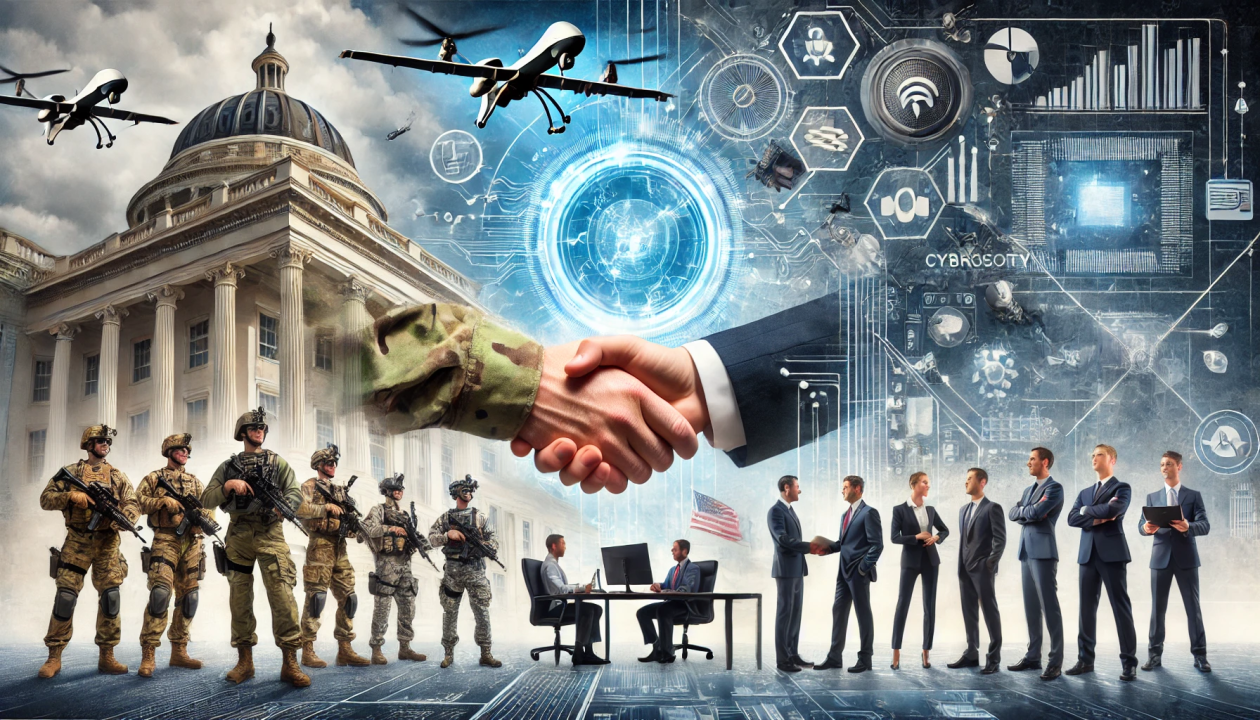Further Considerations in Government and Defense
9. Defense Spending and Budget Priorities
Governments around the world are grappling with how to allocate their defense budgets, balancing national security needs with the pressures of public welfare, economic stability, and social priorities. Defense spending is a significant part of national budgets, and decisions on how to allocate resources can have long-term effects on a country’s defense posture.
Defense Budget Challenges
- Balancing National Security and Domestic Needs: The balance between defense spending and funding for other areas like healthcare, education, and infrastructure is a critical issue. While defense is vital for a nation’s sovereignty and security, governments must also invest in social programs to maintain domestic stability and public satisfaction. The challenge is to allocate enough funding for defense without undermining other essential services.
- Technological Investment: As modern warfare increasingly relies on advanced technologies, defense spending must shift towards new innovations. Governments are investing heavily in areas like AI, cybersecurity, space defense, and autonomous systems, but these technologies require substantial research, development, and procurement costs. As such, countries are adjusting their defense budgets to prioritize these emerging technologies, which may come at the expense of traditional military expenditures.
The Role of Military-Industrial Complexes
- Public-Private Partnerships: Governments and private defense contractors often work together to develop advanced weaponry and technologies. This relationship is crucial in ensuring that defense needs are met while encouraging innovation in the defense sector. However, the power of defense contractors has been a subject of public concern, with critics arguing that the military-industrial complex has too much influence over government defense policies. This has led to calls for more transparency and accountability in defense spending.
- Global Arms Trade: The defense industry also plays a central role in the global arms trade. Countries that manufacture weapons often sell them to allies or even adversaries, which can create complex geopolitical relationships. Military aid, defense cooperation agreements, and arms exports are often tools of foreign policy that require careful management.
10. Artificial Intelligence, Ethics, and Autonomous Weapons
The intersection of artificial intelligence (AI) and defense is one of the most contentious areas of modern warfare. As AI continues to evolve, its potential to revolutionize military strategies is enormous, but it also raises serious ethical concerns.
Ethical Implications of AI in Warfare
- Autonomous Lethal Weapons: One of the most controversial applications of AI in defense is the development of autonomous weapons systems (AWS), which can identify and engage targets without direct human intervention. The use of such systems raises profound ethical issues, particularly concerning accountability and the potential for AI systems to make errors. The United Nations has even begun discussions about regulating or banning autonomous weapons, but widespread consensus on these issues has yet to be reached.
- AI and Military Decision-Making: AI is increasingly being used to support decision-making in defense, from predicting enemy movements to analyzing large datasets for intelligence. While this can increase efficiency and reduce human error, it also raises questions about the role of human judgment in warfare. There is concern that overly relying on AI could lead to strategic mistakes or unintended escalations.
- AI and Humanitarian Law: Governments must consider how AI can be reconciled with international humanitarian law, which seeks to limit the suffering of civilians in armed conflict. AI systems may not be able to fully comply with the laws of war, particularly in terms of distinguishing between combatants and non-combatants. As such, governments will need to ensure that AI technologies are developed and deployed in compliance with ethical guidelines and legal standards.
The Future of Autonomous Drones and Robotics
- Unmanned Aerial Vehicles (UAVs): Drones are already widely used in modern defense operations, from surveillance to targeted strikes. Their role is expected to grow with further advancements in AI, where UAVs can make real-time decisions on targeting and engaging adversaries. While they offer significant advantages, such as reducing human risk and increasing precision, the reliance on drones also raises concerns over accountability and the possibility of their misuse.
- Autonomous Ground Vehicles: Autonomous military ground vehicles, including robots and unmanned tanks, are being developed to perform tasks such as reconnaissance, bomb disposal, and logistics. These systems could significantly reduce casualties on the battlefield, but they also bring questions of how autonomous robots should be integrated into military decision-making processes.
11. Defense and the Global Arms Race: Analyzing Strategic Competition
The global defense landscape is increasingly characterized by a modern arms race, not only in terms of nuclear weapons but also in the development of new military technologies, cyber capabilities, and space defense systems. Countries are investing in advanced weaponry and technologies in an effort to maintain or achieve strategic military superiority.
The Nuclear Arms Race: Modernizing and Proliferation
- Nuclear Deterrence and Arms Control: Despite international agreements such as the Treaty on the Non-Proliferation of Nuclear Weapons (NPT), the modernization of nuclear arsenals remains a core focus for many of the world’s leading military powers. Countries like the United States, Russia, China, and India are modernizing their nuclear forces, including the development of hypersonic missiles, to maintain nuclear deterrence in an increasingly multipolar world.
- New Nuclear Powers and the Risks of Proliferation: As more countries develop or acquire nuclear weapons, the risk of nuclear proliferation rises. Nations like North Korea and Iran have accelerated their nuclear programs, creating tensions with their neighbors and the international community. The growing nuclear capabilities of these nations are a major concern, as they increase the likelihood of miscalculation and conflict.
- Strategic Stability and Arms Control Agreements: There is a need for updated arms control agreements to reflect the current security environment, with an emphasis on limiting the spread of new technologies, such as hypersonic weapons and cyber weapons, which could destabilize global security. Diplomatic efforts are ongoing to reach agreements that prevent the escalation of the arms race and ensure strategic stability.
Space Militarization: A New Frontier for Global Competition
Space is becoming increasingly important as both a domain for military operations and a strategic asset. As the potential for conflict in space grows, so does the need for effective space defense strategies.
- Space-Based Weapons: Space-based weapons, including anti-satellite missiles and directed-energy systems, could dramatically alter the military balance of power. The ability to disrupt or destroy an adversary’s satellite infrastructure could cripple communications, navigation, and reconnaissance capabilities. Therefore, countries are accelerating their investment in space defense systems to secure their assets and deter potential adversaries.
- Space Command and Operations: In response to these emerging threats, several nations, including the U.S. with its Space Force, have established specialized branches of the military dedicated to space defense. This new frontier of military operations requires highly trained personnel and cutting-edge technology to protect vital space assets and ensure operational security in an increasingly competitive space environment.
12. The Role of Defense in National Resilience and Crisis Management
As defense strategies evolve, the role of the military in national resilience and crisis management is becoming more pronounced. Modern defense is not just about warfighting; it is also about ensuring the stability and survival of a nation during times of crisis.
Military Support in Natural Disasters and Pandemics
The military is often called upon to provide support during national emergencies, such as natural disasters, pandemics, and large-scale infrastructure failures. This has been highlighted by the COVID-19 pandemic, where military forces played a critical role in managing logistics, distributing vaccines, and maintaining public order.
- Military-Community Collaboration: In addition to providing direct humanitarian assistance, the military also plays a role in coordinating with civilian agencies to ensure that national resilience plans are implemented effectively. Governments are increasingly recognizing the importance of a cohesive response, where military forces work alongside public health agencies, disaster relief organizations, and local governments.
- Preparedness for Future Crises: With the increasing frequency of climate-related disasters and the potential for future pandemics, governments are focusing on improving their defense strategies to ensure rapid response capabilities. This includes building more resilient infrastructure, enhancing supply chains, and training military personnel to handle non-traditional threats.
Conclusion: Shaping the Future of Defense Policy
As the global defense environment continues to shift, governments face an increasing number of complex and interconnected challenges. From the integration of new technologies like AI and autonomous systems to the need for international cooperation in space and cyber defense, governments must adapt their defense strategies to remain competitive while ensuring security and stability.
The future of defense policy lies in balancing innovation with ethical considerations, fostering international partnerships, and preparing for a range of global threats that go beyond traditional military engagement. By embracing new technologies, strengthening alliances, and focusing on resilience, governments can help ensure national security in an increasingly unpredictable world.


